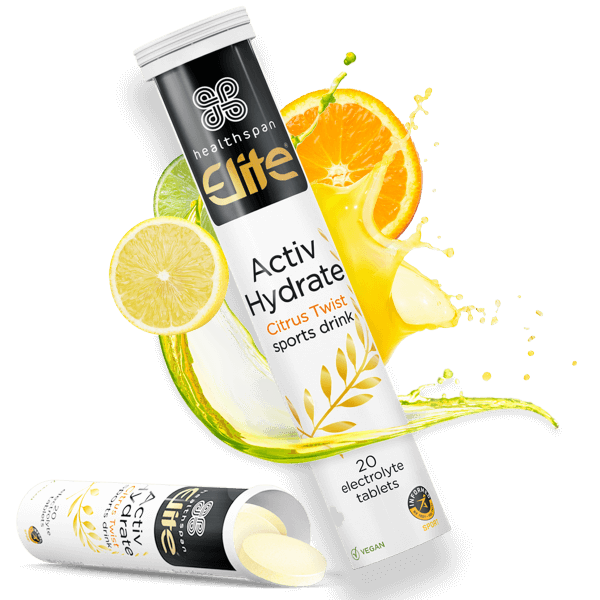Hydration is critical to sporting performance, but how do you know how much to drink? Sports nutritionist Rob Hobson shows you how to calculate your sweat rate to help you formulate a hydration strategy.
Hydration is a critical component of success in sporting performance, especially endurance or other events involving long periods of exercise.
Dehydration can harm performance by reducing blood volume, cardiac output and VO2 max – the rate at which the heart, lungs and muscle can use oxygen during exercise.
Further effects of dehydration include a decrease in the release of heat from the body, raised core temperature and central nervous system fatigue, and an increased rate at which muscles use glycogen (the primary energy stored in the body.)
When does dehydration become a problem?
Dehydration equating to around 2% of body mass can lead to an impairment of cognitive function, which includes concentration, reaction times, coordination and decision-making.
This may be particularly detrimental in power endurance sports such as tennis. Hydrating to excess can also cause problems and, in extreme situations, can lead to dizziness, muscle fatigue and confusion.
What are the recommendations for hydration?
The joint position statement from the Academy of Nutrition and Dietetics, Dietitians of Canada, and the American College of Sports Medicine states that a fluid intake between 400ml and 800ml will suit most athletes and athletic events.1
However, this is highly variable depending on exercise intensity, climate, bodyweight, kidney function and sweat rate.
Drinking to thirst is one approach, but this does run the risk of over-hydrating, especially if there is a misunderstanding of thirst sensitivity. Older athletes may also have a diminished sensation of thirst.
How can you develop a hydration strategy?
Establishing a hydration strategy is beneficial for endurance athletes. Before an event, athletes should be in a state of balanced hydration.
Check your urine colour, as it should run clear to show you are in balanced hydration. At least 4 hours before racing, drink 5-7ml of water or sports drink per kg of bodyweight.
If your urine is still dark, add a further 3-5ml per kg of body weight each hour for 2 hours before your event, through sipping your drinks.
80kg male
- Drink 400-560ml four hours before
- If urine is still dark, add 240-400ml per hour
Calculating your sweat rate is a simple way to establish your hydration needs. The calculation outlined below will give you the amount of fluid required in litres per hour.
Sweat rates differ depending on climate, which means re-calculating at different times of the year or when competing abroad.
How do you calculate sweat rate?
Before carrying out your sweat rate test, ensure you empty your bladder by visiting the bathroom.
The next step is to weigh yourself without clothing. This weight in kg is (A).
Before you go for your run or bike ride, measure out any fluids you are taking with you.
The simplest way to do this is by weighing your water bottles (1g = 1ml). The units you need to use for the calculation are litres (divide your ml figure by 1,000 to get litres.) This figure is (X).
Perform your exercise, which should be between 1 and 2 hours.
After exercising, weigh your water bottle again. This figure is (Y). Calculate the amount drunk. This is (X) – (Y) to give you (Z) in litres.
Towel yourself dry and weigh yourself again without clothing. This weight in kg is (B).
Calculate your weight loss. This is (A) – (B) to give you (C) in kg.
Calculate your sweat rate. This is (C) + (Z) divided by the time spent exercising.
Weight before exercising: 65kg (A)
Weight after exercising: 64kg (B)
Weight lost during exercise: 1kg (C)
Amount of fluid drunk during exercise: 0.8L (Z)
Duration of exercise: 2 hours
Sweat rate
(C) + (Z)/time = l/hr
(1 + 0.8)/2 = 0.9l/hr
What about electrolytes?
Replacing electrolytes during prolonged exercise can help negate the effects of dehydration and fatigue. The most important electrolyte is sodium, which is lost through sweat.
Sodium is required to maintain fluid balance in the body, helping it to retain water. This electrolyte is also necessary for the normal functioning of muscles and nerves.

Elite Activ Hydrate
Delicious fruit-flavoured electrolyte drink to replenish minerals lost during exercise
- Replenishes the essential electrolytes sodium, calcium, magnesium and potassium
- Contains 300mg sodium
- Informed Sport-accredited
Athletes should include up to 600mg of sodium per hour if they have a high sweat rate of over 1.2ml/hour, or exercise for more than 2 hours.
Professional athletes may have their sweat analysed for sodium concentration alongside a sweat rate test to help determine a more accurate use of electrolytes during exercise. Electrolytes can be consumed through sachets added to drinks.
Following the recommendations for hydrating during exercise is a good general guide. Still, it may be more beneficial to calculate sweat rate for athletes involved in prolonged periods of exercise.
Calculating sweat rate provides a more individualised approach to creating a hydration strategy, and is particularly beneficial when athletes have to compete in a range of climates.










